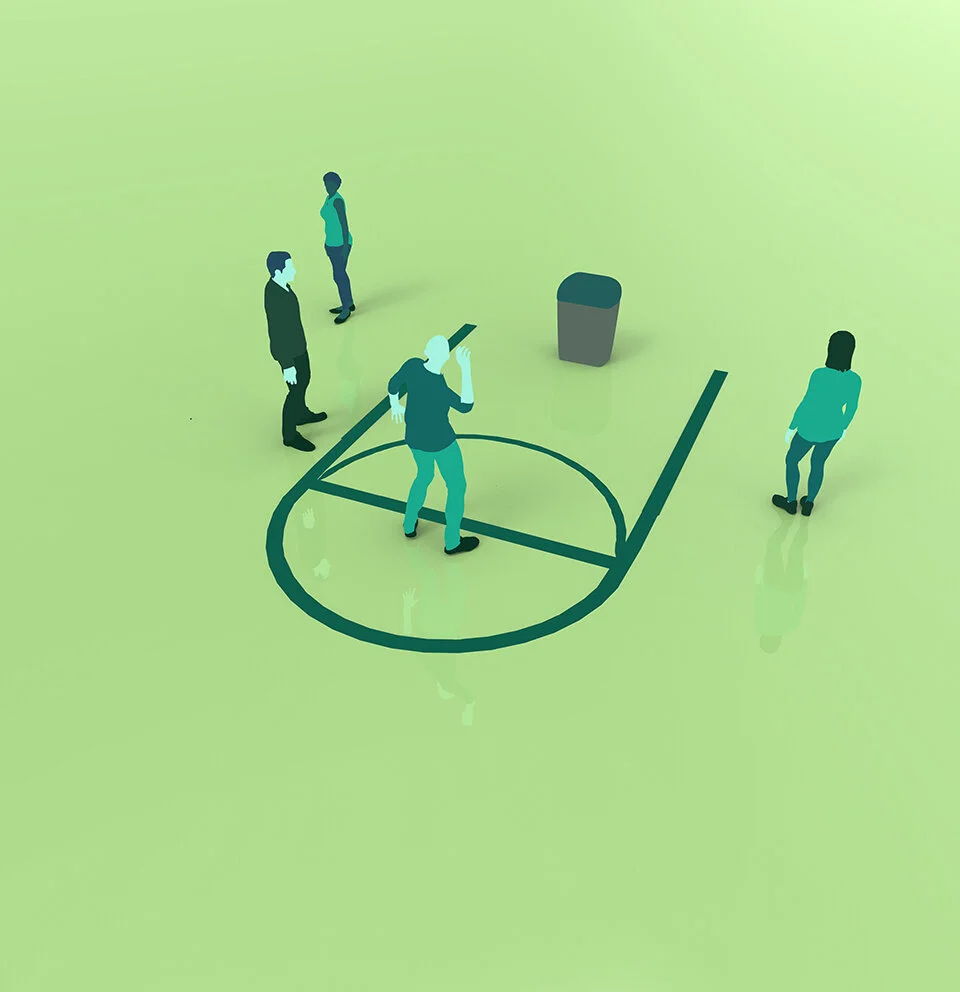Challenge
Mitigate loneliness on University of Alberta campus through a design intervention.
Outcome
The “Don’t Panic” Guide to Reducing Student Loneliness. It was implemented the following year by the Healthy Campus Unit.
Method(s):
Arts-Based Research
Placemaking
Human-centred Design
My Role
We conducted literature review together. From our research we decided to use an arts-based approach and developed the experiments collaboratively. Myself and Giulliano conducted and built the primary research experiments. Then Ania and Stephanie made the guide and report, while Giulliano and I wrote the script and made the presentation which, we all presented together. Giulliano created the illustrations.
Project Team
Ania Guzik
Giulliano Palladino
Ruslan Hétu
Stephanie Hayward
Our design intervention was to create a guide for students volunteers who are a part of HCU. It was based on months of primary and secondary research. This guide was meant to facilitate the implementation of micro-interactions evens that could be done at low-cost at specific time throughout the semester in correlation with the students seasonal mental states. Below is a mock-up of the guide we made along with some other illustrations to demonstrate the other micro-interactions in the guide.
Micro-interactions are small activities that encourage students to engage with the people and environment around them. Micro-interaction activities can be split into three types of interactions based on the amount of time they take. In this guide we included examples of three short, one medium and two long interactions. They are all easy to implement and open to interpretation and iteration thus the inclusion of the notes section.
Taking an arts-based approach…
“How might we improve a student’s sense of belonging on campus through adding to or altering existing campus infrastructure?”
From our research into loneliness we developed a good understanding of loneliness from an academic perspective and this research question (above) but we needed to better understand the students. So we decided to use an arts-based research framework to create new ways of gathering and interacting with the students on campus. Through experiments we were able to narrow down our scope and discover a rich innovation space on campus.
Experiment 1: Brown Paper
Our first experiment required four large sheets of paper and a couple of Sharpies. We wrote “How Does This Space Make You Feel?” on each one and set them up in various parts of campus. Responses ranged from “good” to “alone” to “creative” to “hopeless”. This helped shaped our understanding of how students were willing to interact with our experiments.
Billybot
The emotions ballot box…
Experiment 2: Emotions Ballot Box
For our next experiment, we put together ballot boxes out of cardboard and paper, which we then scattered around campus. Willing participants were asked to choose a piece of coloured paper – red being social, yellow being happy, green being trapped, and blue being lonely – and put it in the box based on how they were feeling in the space. The feelings provided were narrowed down from those mentioned and collected in the first experiment. This experiment helped us narrow down locations on campus that we could have an impact on.
592 Responses
in one week
BillyBot Student Responses
Emotions Map
blue dots = most time spent
yellow or green dots = areas liked the most
red = least liked areas
Experiment 3: Emotions Map
While our ballot boxes filled up, we conducted another experiment which involved a map and multi-coloured dot stickers. We walked around campus and asked strangers to place blue dots where they spend the most time; yellow or green dots were placed on areas they like the most; and red signified their least liked locations. Many of the red dots were placed in locations associated with stress – the Butterdome, for example, which is where some finals take place. The placement of green and yellow versus blue dots suggest that places where students spend the most time are not necessarily their favourite places.
From our analysis of our arts-based experimentation, we discovered these insights:
Students can interact with each other without speaking, through shared experiences
Students are willing to interact with artifacts on campus
Though students suffer from loneliness, many are unwilling to interact with strangers on campus
Fostering Micro-interactions…
Simple actions like a smile in passing or a good morning from a barista are small actions that can snap students out of states of loneliness jut through interaction with another human. These simple actions became apparent to us from our experiments which we began to call micro-interactions.
Micro-interactions are small activities that encourage students to engage with the people and environment around them. They do not require a large time commitment, making them perfect for hectic student life. They are a form of ‘fleeting relationship’, which is easier to come by when combatting loneliness in students’ lives than ‘anchored relationships’, which require more upkeep. We developed the ones for our guide through 2 more experiments depicted below.
Reflection
In this project, I was very surprised by the amount of engagement that we were able to foster through arts-based research methods. In the initial stages of this project, we were stunned into inactivity by the immensity of loneliness as a topic. When we started researching arts-based research, it really started to help shape a new framework that we could use in primary research. It was particularly useful to us because of the access we had to campus. Working with the HCU was awesome because of the freedom they gave us in the brief which allowed us to try these kinds of experiments. This project forever changed my perspective of conducting research.
















